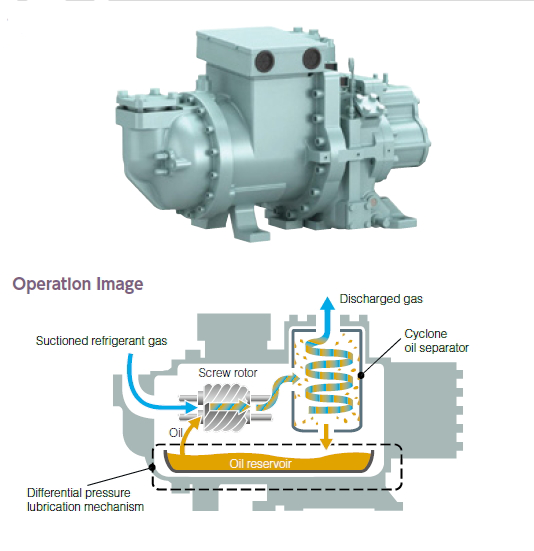
|
|
Operating Principle of The Screw Compressor |
|
The refrigerant gas and oil flow into the oil separator together.
The cyclone system begins to separate the refrigerant gas
and oil by centrifugal force. Refrigerant gas is ejected from
the discharge port, and oil drops down to the bottom tank. |
|
Lubrication oil is required for sealing the area between the two
screw rotors as well as for the lubrication of the bearings, but
it decrease the efficiency of air-conditioning units at heat
exchangers. The oil and refrigerant are separated by
centrifugal force in the cyclone oil separator. After it is
compressed by the screw rotors, refrigerant gas enters the
upper side of the separator.
|
|
Refrigerant gas then enters through the lower side of the
separator, and the oil is separated by centrifugal forces to the
wall of the separator. Oil then goes down to the oil tank along
the wall. The oil is accumulated in the oil tank, which is
located on the bottom of the separator, and only refrigerant
gas is discharged from the discharge port, which is located
on the upper side of the separator. The oil that is accumulated
in the tank is then supplied to the screw rotors by pressure
difference. Unlike other compressor structures, this structure
doesn't require mechanical parts such as an oil pump for its
oil supply, which leads to higher reliability for the compressor.
|



